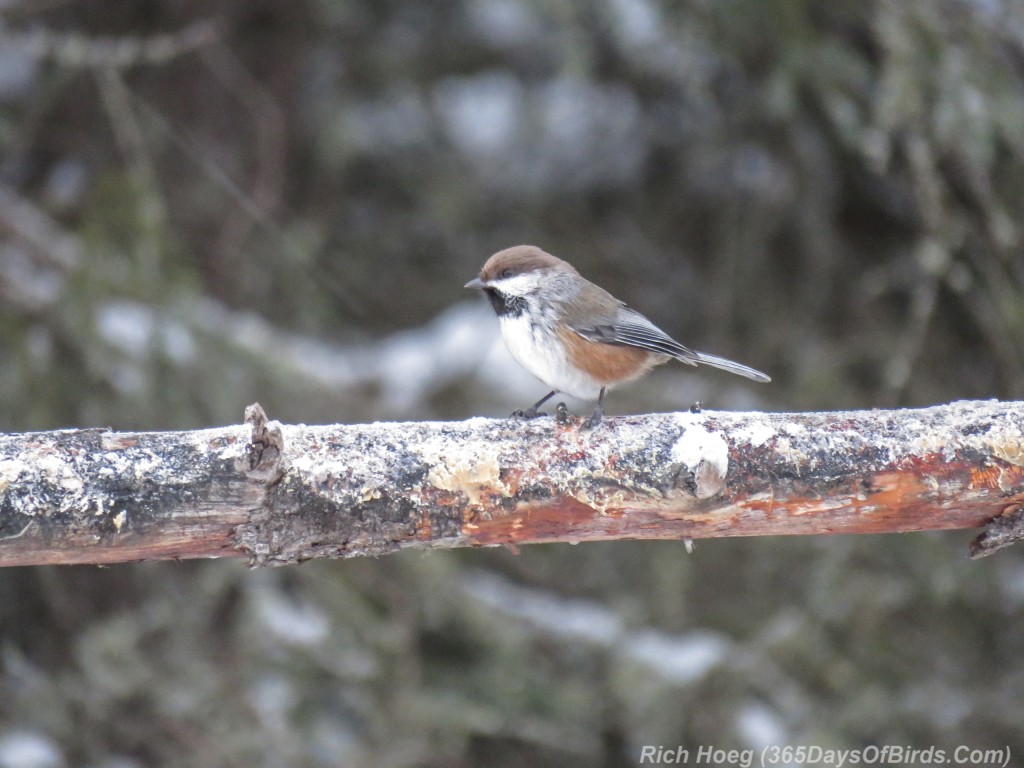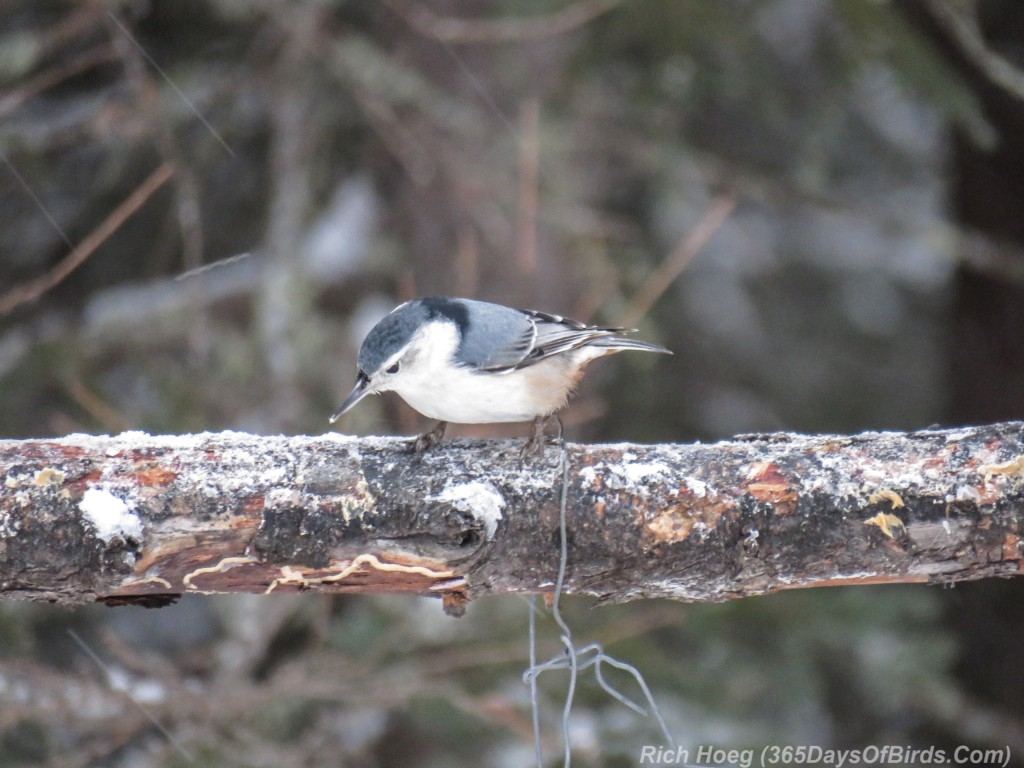Any outdoorsman worth his peanut butter and jelly sandwiches will know it’s worth sharing with the small Boreal birds! Believe it or not, I am not pulling my proverbial reader’s legs. This morning I made a trip north of Duluth to the Sax-Zim Bog. This region is one of the premier winter birding locations in the lower 48 states. Although I work as a volunteer naturalist at the Bog Visitor Center, today’s trip was solely for birding.
When I arrived at the feeders on Admiral Road around 8:10 am, which was about 1/2 hour after sunrise, conditions were not ideal for the “outdoor photographer”. In fact, in addition to the fact that the sun was not yet very high up in the sky, the globe was hidden behind thick clouds with light sleet in the air. However, birds eat on their own schedule, and a few Boreal Chickadees arrived to feast on peanut butter within ten minutes of my arrival. Like any good photographer, I wanted to capture the image of this northern winter visitor. If you are familiar with chickadees, please understand they are a high energy bird which rarely stands still. Therefore, normally the best photograph settings for a Boreal Chickadee would be a very fast shutter speed. This kind of camera setting was not possible given the weather conditions. One option might be to push the ISO higher and higher to obtain a fast shutter speed. I actually chose a compromise. One HUGE advantage of the burst mode is one can takes lots and lots of pictures. Thus, I pressed the shutter down, and hoped my birds would momentarily stand still such that I would get away with a slower shutter speed, and a lower ISO setting.
If you look closely at the two images shown below, it is actually possible to see the sleet streaking through the air. The other bird is a white-breasted nuthatch … another bird which does not like to stand still. I threw out many, many blurry photos to obtain these two final images.
Boreal Chickadee and White-Breasted Nuthatch


Discover more from 365 Days of Birds
Subscribe to get the latest posts sent to your email.